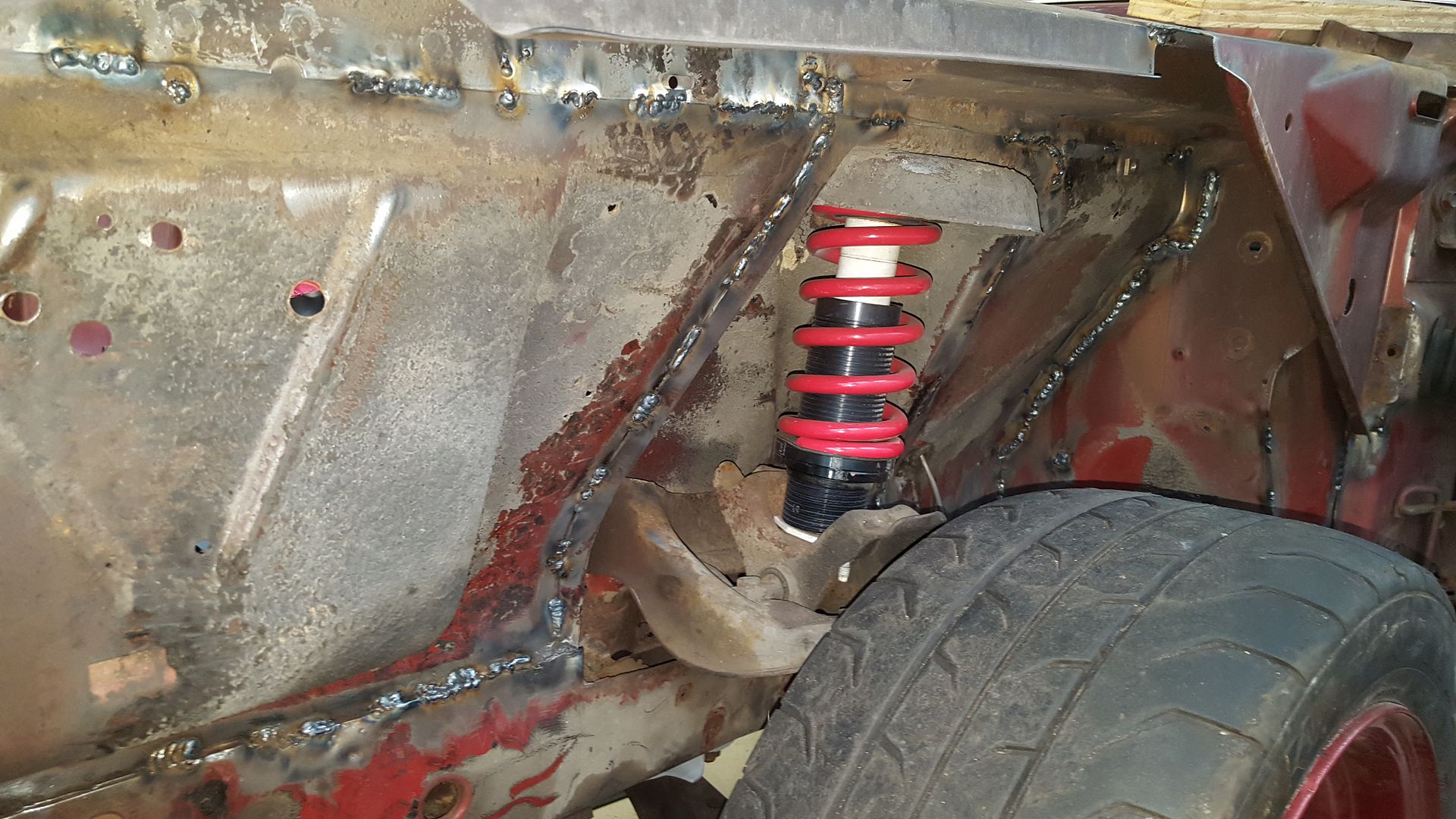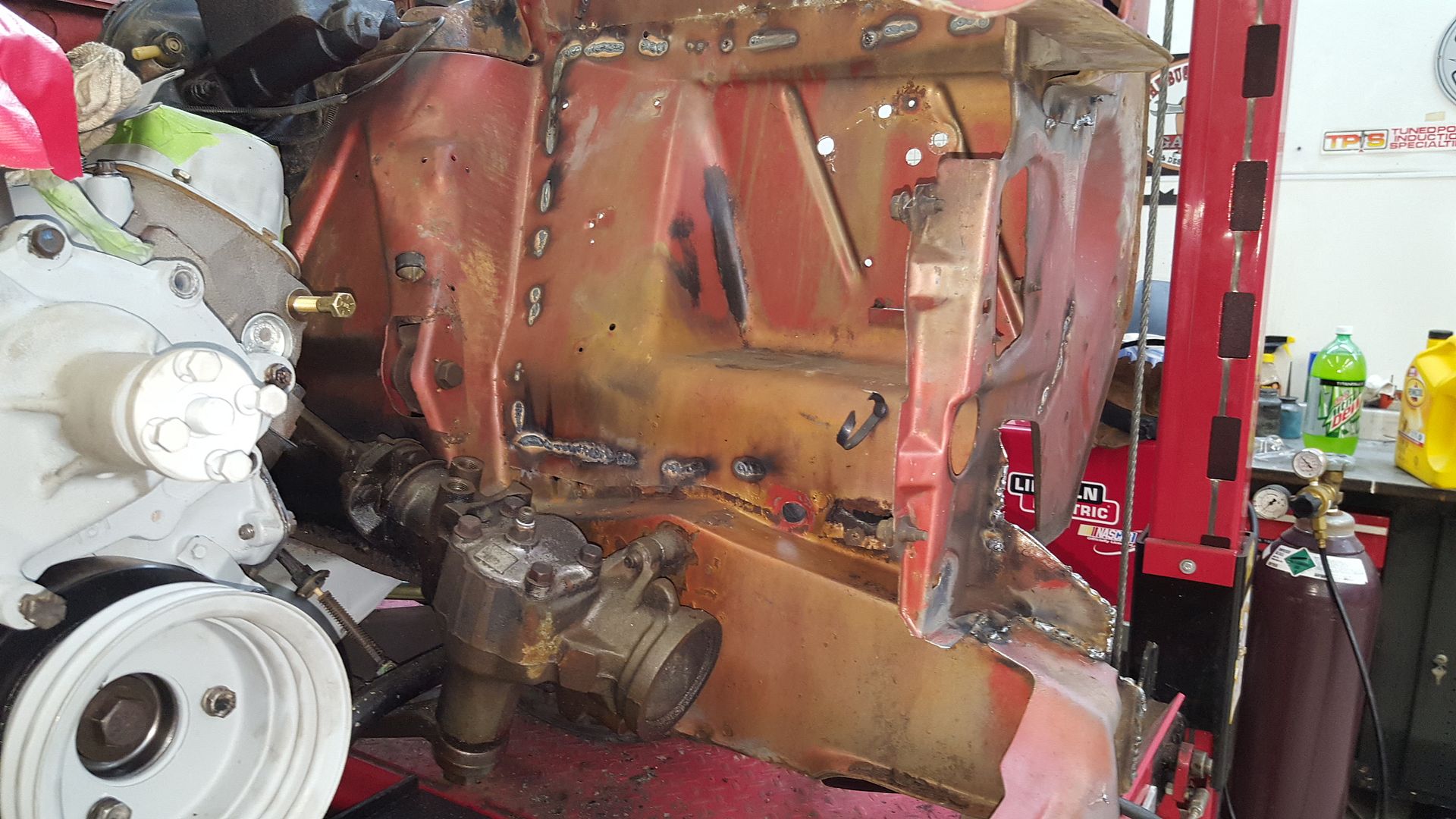so, I ran a LOT of wire through the machine last night. car is already much stiffer. but now I have some dilemmas.
plan is to weld evey seam that I can realistically get to. doing the best I can with 36 year old rusty, contaminated metal. car will also be caged before the challenge for ultimate is chassis rigidity and driver protection. its an 80 amc spirit, going to look like an imsa clone when done.
anyway, I'm starting on the underneath of the car. last night I got the inner fenders (underside) and passenges side underside to the back of the door done.
[URL=http://s54.photobucket.com/user/dusterbd13/media/amc/20161108_191320_zpswajsj64v.jpg.html] [/URL]
[/URL]
now, on the other side of the panel is the engine bay. you can see in the next picture where my beads run. there is another seam, joining the same to pieces about an inch inboard of where I welded. should I weld this seam as well? seems to me that it would add longevity to the chassis, but not stiffness. I'm not dure though, which is why I'm asking for opinions and advice.
[URL=http://s54.photobucket.com/user/dusterbd13/media/amc/20161108_191329_zpsu3um2lc6.jpg.html] [/URL]
[/URL]
on the rust repair this chassis previously received, whoever did it laid a panel in on the interior, and tacked it into place. I have been fully welding these. there is a similar about of overlap, about an inch, between where my weld bead is and the other seam. again, debating on how much to do. I have no issue adding time and labor, but don't want to piss it away either. weve got a long way to go before February.
If not finished quickly and properly seam welds can rust and make the chassis weaker than it was to begin with. The photos makes it difficult to tell the quality of welds, but I have done this 2 different ways in the past.
1) Doing 1 inch runs of bead every 3 inches or so works well, but the problem with doing it on sheet metal is it adds a lot of heat, can promote warp age, and the tail end of the weld tends to be too hot. It is OK, but slow. This is the better method if your steel is thicker, but to do it properly you need to let the welds cool a couple minutes between each stint. NOTE: do not do anything to rapidly cool the weld(air, wet towel, etc.) it will cause the metal to contract.
2) My preferred method is a well penetrated "tack" weld every inch or so. This works very well on thin sheet steel. It also works well on thick stuff if you increase your amperage. Make a system where you set the welder appropriately and start an arc, do a 3 count, and move on. Anything you can do to systemize your process will make things easier and produce a better result in the long run.
Some welding is much better in places than others. Good penetration throughout though.
Any tips on makeing a better systems approach to the job?
And what about both seams on the 1 inch overlap?
You'll need to log in to post.